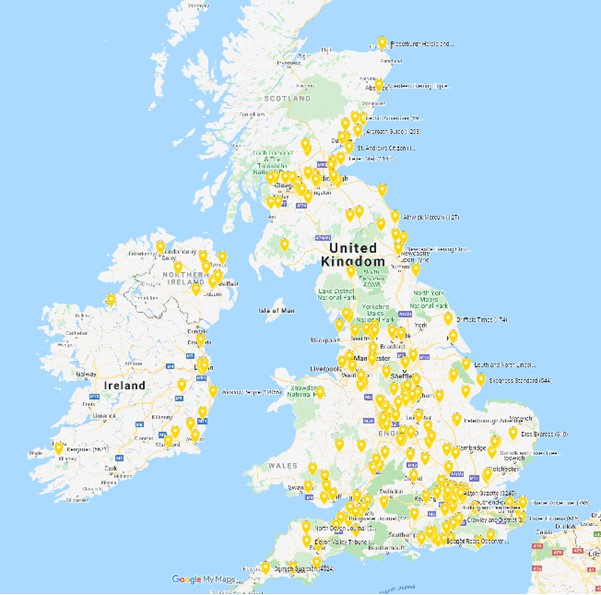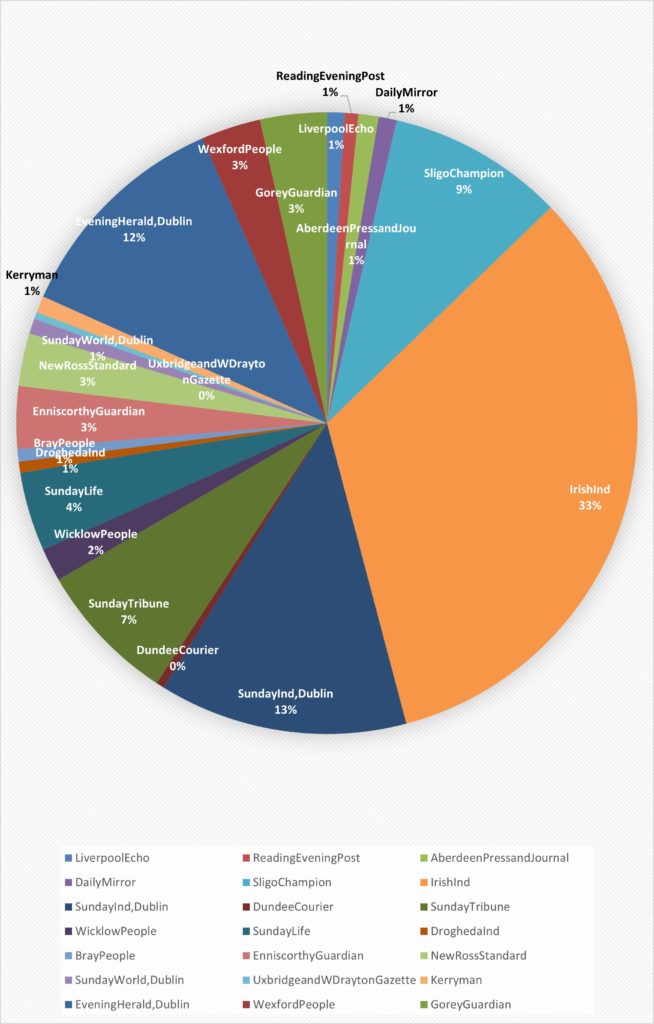This post is the first in an occasional series building up a historical picture of the Everyday Cyborg
One of the tasks currently being undertaken on the Everyday Cyborgs 2.0 project is to historicise the Everyday Cyborg. Some might disagree about how to define this central concept, and others might wonder whether there are better terms to use that focus on the technologies concerned – such as active implantable medical devices – which are otherwise held to make up the ‘Everyday Cyborg’. I have considerable experience working on phenomena with contested definitions and constituent features, thanks to my time researching synthetic biology. The kind of historical anatomising that I laid out there can be replicated here. Where to start?
Historicising the Everyday Cyborg
The most important general challenge is to understand the medical marketplace for implantable medical devices from the mid twentieth century to the present. Without this context it will be hard to understand how we have arrived at the biomedical engineering, industries, and regulations of the present. There are no existing historical overviews of the development of this marketplace. Instead I am at the outset learning from histories of particular instruments or devices, such as hearing aids, cervical caps, and prosthetics, and analyses of important international regulatory moments, such as those produced by Christa Altenstetter. Thinking historiographically, I am learning from historians who have dedicated attention to intersections of the history of medicine and the history of technology, as Claire Jones has done for surgical instruments, or as the editors and contributors to Devices and Designs have done, and as the numerous speakers in this upcoming seminar series will do! In short, the time is ripe for general investigations of the medical device marketplace. How to contribute, particularly during a time when physical archives are closed?
British Newspaper Archive
The British Newspaper Archive (BNA), which was developed out of resources originally held and maintained by the British Library, is only accessible to those who pay a subscription fee. One month’s access costs just under £13. The resource itself is pretty unmatched, archiving hundreds and hundreds of (primarily local) newspapers over centuries. I wrote to Dr James Mussell for advice on understanding this resource, and his recommendation of the British Library ‘Newsroom’ blog was particularly helpful, not least because it linked to some guides to these databases. Of course, that the BNA is digital makes it particularly valuable while everywhere else is closed. As my first step towards understanding how the marketplace in medical devices has come to adopt the form it has today, I have searched the BNA for the exact phrase ‘medical device’ for the period covering 1948 to the present. I chose 1948 as I assume that the figure of the Everyday Cyborg in Europe will be inextricably linked to the history of the NHS. I first completed a search for the word ‘medical’ in order to see what range of newspapers would appear, given the particular years I was interested in. The full list of papers which emerged can be found here. You can see them all in Figure 1.

As you can see, the available papers cover the UK and Ireland fairly well. For the full map please visit:
https://www.google.com/maps/d/u/0/edit?mid=1oHF63Hul25NKuO72-tvjvzF20esqEC2P&usp=sharing
Please be aware that the coordinates for each paper have been guessed at based solely on the paper name, and none have been double checked. So this really is a provisional exercise.
Next I searched for the exact phrase ‘medical device’. This produced 2,894 individual items, across 53 newspapers (Figure 2). I now have those articles, the majority of which are job adverts, and I will be analysing them for evidence of the companies involved, any important individuals, technologies, events, etc. etc. At this stage I have nothing to share, apart from the very highest of helicopter views of the historical geography which these papers reveal, hence the title of this blog post.

Of those 53 newspapers, only 21 feature 10 or more entries with the phrase ‘medical device’. For those 21 papers, the number of times which ‘medical device’ appears in their pages is visualised in Figure 3. As you can see, ‘medical device’ is pretty Irish, and pretty Dublin! The top three newspapers include the Irish Independent, taking 33% of all results, followed by the Sunday Independent (Dublin), with 13% and the Evening Herald (Dublin) with 12%. Dublin, Dublin, Dublin.

If you struggle to read this image, you can download the chart here.
What does it mean?
Of course with a database exercise like this one, any number of things might be skewing the results. First, I am dependent on the BNA’s word recognition software, so there will be many entries that I have missed. This obviously wouldn’t explain the geography of this result, as I have no reason to think that Irish newspapers would make the phrase ‘medical device’ easier to read. Second, it might be that Irish newspapers are just more complete in the BNA for this period. But I do not think this likely, as when I carried out my initial search for ‘medical’ just as many entries appeared for all newspapers across the UK and Ireland. Indeed, for ‘medical’ in this period, the four largest newspapers were the Birmingham Daily Post (103,566 returned results), the Liverpool Echo (90,889 returned results), the Irish Independent third (with 88,222 returned results) and then the Aberdeen Press and Journal (with 79,319).
Another option is that newspapers in the UK tended to use alternative language, other than medical device. For instance, I could try and repeat this exercise for ‘medical technology’ and see what results I get. Or perhaps in the UK the majority of this reporting/advertising was reserved for national rather than local newspapers, and so I will have to address those bigger papers too. Indeed, the Irish Independent was/is hardly a local paper, so understanding its relationship to the wider set of results will take further and more national analysis. But again, none of this would necessarily undermine the geography of the current result, it would just ask us to consider the different divisions of labour between national and local papers in Ireland and the UK and their respective readerships. More should emerge once I get into the content of these items, and once I have expanded the search to incorporate more national papers.
Here it is worth mentioning again that the majority of these results seem to be job adverts, and many job adverts in the Irish examples that I have briefly looked at seem to be repetitive (i.e. the same job advert has been placed in many papers at the same time). Once I am able to adjust for repetitions, the extent of the representation of Ireland in this sample might look very different. When I was writing this post, I wrote to Dr Claire Jones for advice, and she suggested I keep in mind the fact that different newspapers have different business models, which might make them more or less reliant on advertising and job placements, which might also be contributing to my current picture. She also emphasised that Dublin’s status as a manufacturing hub is no doubt important. All of this would help to understand why my data has a leaning toward Dublin (though why London papers would feature so little is still weird). Ultimately, perhaps (?) we are learning that the greater part of the self-recognised medical device marketplace, as discernible from the BNA, was founded and developed in Ireland! Perhaps. If you already knew this, tell me how! If you know this isn’t true, tell me how! Do please get in touch via the email address below.
Written by: Dominic Berry
Email: d.berry@bham.ac.uk
Funding: Work on this was generously supported by a Wellcome Trust Investigator Award in Humanities and Social Sciences 2019-2024 (Grant No: 212507/Z/18/Z).
